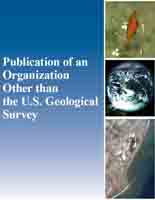Great diversity of KSα sequences from bat-associated microbiota suggests novel sources of uncharacterized natural products
Links
- More information: Publisher Index Page (via DOI)
- Data Release: USGS data release - Data related to great diversity of KSalpha genes from bat skin external microbiota, from Arizona and New Mexico, indicate novel PKSII biosynthetic gene clusters
- Open Access Version: Publisher Index Page
- Download citation as: RIS | Dublin Core
Abstract
Polyketide synthases (PKSs) are multidomain enzymes in microorganisms that synthesize complex, bioactive molecules. PKS II systems are iterative, containing only a single representative of each domain: ketosynthase alpha (KSα�), ketosynthase beta and the acyl carrier protein. Any gene encoding for one of these domains is representative of an entire PKS II biosynthetic gene cluster (BGC). Bat skin surfaces represent an extreme environment prolific in Actinobacteria that may constitute a source for bioactive molecule discovery. KSα� sequences were obtained from culturable bacteria from bats in the southwestern United States. From 467 bat bacterial isolates, we detected 215 (46%) had KSα� sequences. Sequencing yielded 210 operational taxonomic units, and phylogenetic placement found 45 (21%) shared <85% homology to characterized metabolites. Additionally, 16 Actinobacteria genomes from the bat microbiome were analyzed for biosynthetic capacity. A range of 69–93% of the BGCs were novel suggesting the bat microbiome may contain valuable uncharacterized natural products. Documenting and characterizing these are important in understanding the susceptibility of bats to emerging infectious diseases, such as white-nose syndrome. Also noteworthy was the relationship between KS α� homology and total BGC novelty within each fully sequenced strain. We propose amplification and detection of KSα� could predict a strain's global biosynthetic capacity.
| Publication type | Article |
|---|---|
| Publication Subtype | Journal Article |
| Title | Great diversity of KSα sequences from bat-associated microbiota suggests novel sources of uncharacterized natural products |
| Series title | FEMS Microbiology Ecology |
| DOI | 10.1093/femsmc/xtac012 |
| Volume | 3 |
| Publication Date | April 18, 2022 |
| Year Published | 2022 |
| Language | English |
| Publisher | Oxford Academic |
| Contributing office(s) | Fort Collins Science Center |
| Description | xtac012, 11 p. |


